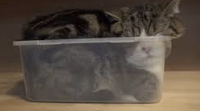Poetry
This is our poetry page. Scroll down to read some poems with your child. At the bottom of each one, you can also see key teaching points and follow-up activities to do.
Another excellent follow-up is asking your child to illustrate the poem in their own way. When we do this in class, the students focus on the Art Elements:
* Size
* Colour
* Space
* Shape
* Texture
* Tone
* Line
Cats Sleep Anywhere
Cats sleep anywhere,
Any table, any chair,
Top of piano, window-ledge,
In the middle, on the edge,
Open drawer, empty shoe,
Anybody’s lap will do,
Fitted in a cardboard box,
In the cupboard with your frocks –
Anywhere! They don’t care!
Cats sleep Anywhere.
By Eleanor Farjeon.
Please read and discuss the poem with your child.
Learning points:
The pairs of sentences rhyme.
Commas to separate ideas.
Vocabulary to discuss – frocks
Activities
· Draw some pictures to illustrate the ideas in the poem.
· Find the 3 describing words.
· Count how many commas are used.
· Compose another pair of rhyming sentences with more places cats sleep.
· Practice reading aloud the poem and perform it to a family member.
· If you have a cat, take a photo of them sleeping in an unusual place and please email them to lisa.seeley@taitapu.school.nz


Animal Homes
On top of a mountain,
Or under the sea,
There are so many places
Where creatures may be.
Alone in a desert,
Or grouped on a farm,
Or tucked in a tree trunk
Away from all harm.
On bright, sunny grasslands,
Or in a dark cave,
In jungles and forests,
Where all must be brave.
On ice in the Arctic,
Or holed underground,
There are so many places
Where creatures are found!
Read through the poem and discuss with your child.
Learning Points:
- What rhyming words can you find in the poem?
- What kinds of animals live in each of the locations mentioned?
- Discuss why some animals are better suited to live in certain environments. I.E. Polar bears and the Arctic.
Activities to choose from:
- Illustrate the poem with all kinds of animals
- Do some research on an animal of your choice
Snails
After the rain,
when everything smells deep and green,
a hundred snails
go up and down our path, across the lawns
and back again.
Under their brown curled
shells, soft little horns
feel out for where they’re going.
Where they have been,
these shining trails
catch in the grey light
like metal roads across a magic world.
By Tony Charles
Please read through and discuss the poem with your child.
This poem links to the science topic of term 2 ‘The Living World – How we can make a difference’.
Learning Points:
· Locate all the describing words (adjectives) and discuss why they were used.
· Is this a rhyming poem?
· “like metal roads across a magic world” – identify this as a simile.
· Discuss why snails are sometimes disliked by gardeners or farmers and try to discover why snails are good for the living world/ecosystem too.
Activities to choose from:
1. Draw an illustration and colour it to go with the poem, you could email the picture to your child’s home room teacher.
2. Hunt for a snail in your garden and observe how the snail moves. Make sure you replace the snail where you found it after your observations. Take a photo of the snail and write down your observations or make up a story to go with the picture.
3. Listen to the story Snail Trail link to story
If you would like to share your work, email it to your home room teacher 😀



